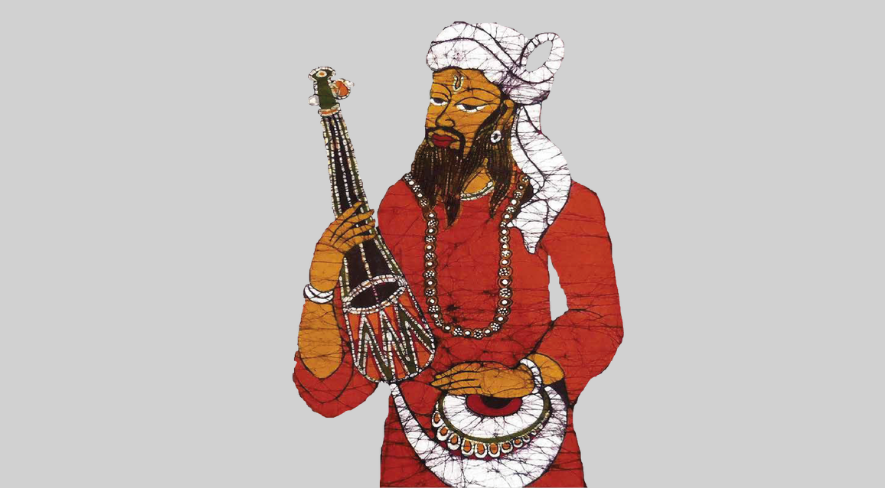Their locks travel down their waist and they are clad in saffron or white. They walk around, aloof from the world, plucking their single-stringed instrument. Their earthy voices fill the air and they harmonise with the chirping of birds as they melt with the rhythm of the soil. They are mystical and whimsical and fall beyond the religious factions that plague society. They believe in the oneness of the soul and God, having devoted their lives to the magic of the universe. They are the Bauls: the bards who represent unity in diversity.
Who are the Bauls of Bengal?
Bauls can be recognised as both a religious and cultural group of India. Their songs are best known or considered to be an invocation of God within oneself. Their path to music is the destination towards finding him.
Bauls are found primarily in West Bengal in India and in Bangladesh. There are three major communities or lineages of bauls. The first is associated with the Birbhum District, which is traditionally considered to be the source of the Baul tradition in West Bengal. Music from this tradition is indicative of the many influences it seamlessly incorporates, including Tantric Buddhism and Shaktism (goddess worship). The second community is known as the Navadvipa sampradaya, which has strong Bengali Vaishnava influence. The third group is the Muslim Bauls or fakir sampradaya, found primarily in Bangladesh.
The Tenets of Bauls’ Music
According to their religious theology and practice, the Bauls believe that God exists physically in the world, especially within the human body. This stands in contrast to the more traditional Indian religious thought that emphasises the importance of purity and transcendence of the physical world. For Bauls, the body itself is pure because they believe that god is present within it.
Music is central to baul belief as there is no revealed text and no single founder. Instead, knowledge is passed down from the teacher to the student through songs. These songs are a mix of spontaneity (sahaja) and reflect the state of religious ecstasy and creativity that come of their own accord, without effort that are highly valued by bauls. Alternatively, other songs describe the role of disciplined religious practice (sadhana), which seek to induce the state of ecstasy (bhava).
Today, bauls are both religious practitioners and entertainers. Further, with the popularity of Christianity among westernised Indians, baul songs now include Christian elements as well. Thus, baul songs can be understood as a beautiful confluence of religious harmony.
Like what you are reading? Find more such content and traditional knowledge, check out The Plus magazine.

